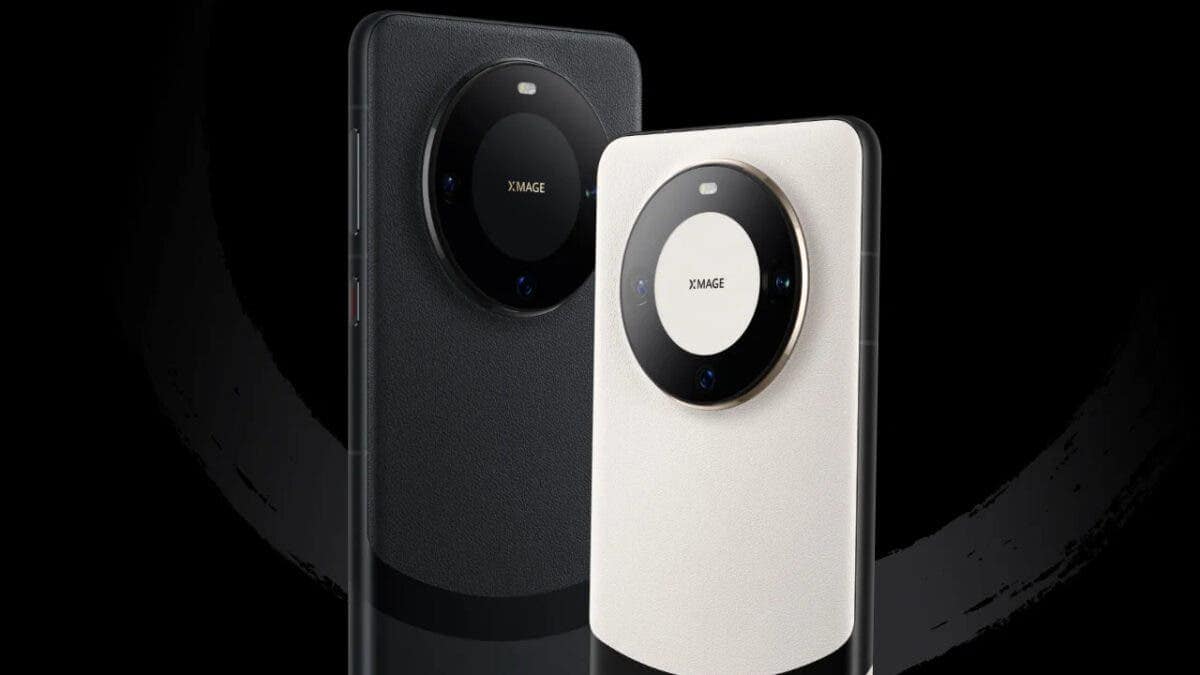
In today’s era, having a superior camera on your smartphone has become a crucial necessity. Not everyone carries around a DSLR camera, so it’s important for the smartphone in your possession to feature an exceptional camera that can capture high-quality photos on the go.
Determining the best camera phone in the world is a challenge due to the abundance of top-tier smartphone cameras. To help you make an informed decision, we turn to DxOMark, whose evaluations provide reliable scores for various smartphones. Let’s delve into the list of the world’s top ten camera phones, as per DxOMark’s evaluations.
Contents
Top 10 Best Camera Smartphones in the World (2024)
Huawei Mate 60 Pro+
The Huawei Mate 60 Pro+ sets new standards for premium camera capabilities. Despite the absence of Google services, it stands out with its 6.82-inch curved OLED display boasting a QHD+ resolution and a seamless 120Hz refresh rate. Powered by Huawei’s Kirin 9000S processor, the device delivers a powerful performance with its tri-cluster CPU and 24-core Mali-G710 GPU.
A key feature of the Mate 60 Pro+ is its innovative camera system, incorporating XD Optics technology. This system comprises a 48MP primary sensor, a 48MP periscope telephoto lens (with 5x optical zoom), and a 40MP ultrawide lens. With a substantial 5000mAh battery and 88W SuperCharge capability, the Mate 60 Pro+ is an appealing choice for photography enthusiasts.
Huawei Mate 60 Pro+ Camera Specifications:
- 48 MP, f/1.4-f/4.0, 24mm (wide), PDAF, Laser AF, OIS
- 48 MP, f/3.0, 90mm (periscope telephoto), PDAF, OIS, 3.5x optical zoom
- 40 MP, f/2.2, 13mm, 120˚ (ultrawide), PDAF
iPhone 15 Pro Max
In a pleasantly predictable manner, iPhones have maintained a consistent yet refined approach to smartphone cameras over their 17-year existence. The iPhone 15 Pro Max introduces a notable enhancement with its new 5X telephoto lens featuring a tetraprism design. The device incorporates the latest A17 Pro SOC to enhance its image processing capabilities.
The iPhone 15 Pro Max addresses previous lens flair issues found in iPhones by introducing a new lens coating. Additionally, the inclusion of the new USB C 3 port allows users to record ProRAW videos directly onto external storage, serving as an additional bonus feature.
iPhone 15 Pro Max Camera Specifications:
- 48 MP, f/1.8, 24mm (wide), 1/1.28″, 1.22µm, dual pixel PDAF, sensor-shift OIS
- 12 MP, f/2.8, 120mm (periscope telephoto), 1/3.06″, 1.12µm, dual pixel PDAF, 3D sensor‑shift OIS, 5x optical zoom
- 12 MP, f/2.2, 13mm, 120˚ (ultrawide), 1/2.55″, 1.4µm, dual pixel PDAF
- TOF 3D LiDAR scanner (depth)
Apple iPhone 15 Pro
The Apple iPhone 15 Pro shares the same impressive camera configuration as its counterpart, the iPhone 15 Pro Max. With a triple camera setup comprising a 48MP primary camera, a 12MP periscope telephoto camera with 5x zoom, and a 12MP ultrawide camera, the iPhone 15 Pro captures detailed and colorful images. The phone features a 6.1-inch Super Retina XDR OLED display for an immersive visual experience.
iPhone 15 Pro Camera Specifications:
- 48 MP, f/1.8, 24mm (wide), 1/1.28″, 1.22µm, dual pixel PDAF, sensor-shift OIS
- 12 MP, f/2.8, 120mm (periscope telephoto), 1/3.06″, 1.12µm, dual pixel PDAF, 3D sensor‑shift OIS, 5x optical zoom
- 12 MP, f/2.2, 13mm, 120˚ (ultrawide), 1/2.55″, 1.4µm, dual pixel PDAF
- TOF 3D LiDAR scanner (depth)
Google Pixel 8 Pro
Google’s Pixel series has become synonymous with outstanding photography. The Google Pixel 8 Pro continues to uphold this reputation by focusing on computational photography and post-processing. Google’s expertise in this field allows the Pixel 8 Pro to capture stunning images, setting a benchmark for smartphone photography.
Pixel 8 Pro Camera Specifications:
- 50 MP, f/1.7, 25mm (wide), 1/1.31″, 1.2µm, dual pixel PDAF, multi-zone Laser AF, OIS
- 48 MP, f/2.8, 113mm (telephoto), 1/2.55″, 0.7µm, dual pixel PDAF, OIS, 5x optical zoom
- 48 MP, f/2.0, 126˚ (ultrawide), 0.8µm, dual pixel PDAF
Oppo Find X6 Pro
The Oppo Find X6 Pro stands out with its expansive 6.82-inch display and a prominent circular camera array housing three impressive 50MP sensors for primary, ultrawide, and periscope telephoto functions. Powered by the Qualcomm Snapdragon 8 Gen 2 processor and featuring Oppo’s MariSilicon X image NPU with Hasselblad tuning, the device offers advanced imaging capabilities.
The Oppo Find X6 Pro excels in producing vibrant images, with its 120x super zoom adding an artistic touch. Despite its substantial size, the device compensates with extended battery life and an impressive 100W charger that can fully charge the device in just 30 minutes.
Oppo Find X6 Pro Camera Specifications:
- 50 MP, f/1.8, 23mm (wide), 1.0″-type, 1.6µm, multi-directional PDAF, Laser AF, OIS
- 50 MP, f/2.6, 65mm (periscope telephoto), 1/1.56″, 1.0µm, 2.8x optical zoom, multi-directional PDAF, OIS
- 50 MP, f/2.2, 15mm, 110˚ (ultrawide), 1/1.56″, 1.0µm, multi-directional PDAF
Honor Magic 5 Pro
The Honor Magic 5 Pro boasts a sophisticated three-camera setup, featuring a 50MP primary camera complemented by a 50MP ultrawide camera and a 50MP periscope telephoto lens offering 3.5X zoom. Equipped with the Snapdragon 8 Gen 2 SoC, the Honor Magic 5 Pro ensures powerful performance. The device features a 6.81-inch 2K display, elegantly curved on all four sides for an immersive visual experience.
Honor Magic 5 Pro Camera Specifications:
- 50 MP, f/1.6, 23mm (wide), 1/1.12″ 1.4µm, multi-directional PDAF, Laser AF, OIS
- 50 MP, f/3.0, 90mm (periscope telephoto), PDAF, OIS, 3.5x optical zoom
- 50 MP, f/2.0, 13mm, 122˚ (ultrawide), 1/2.76″, AF
Oppo Find X6
The Oppo Find X6, the non-Pro variant of Oppo’s flagship lineup, earns its spot on this list with a compelling set of features. Housing a triple camera setup, it includes a 50MP primary camera, complemented by a 112˚ ultrawide camera and a 2.8X periscope telephoto lens. On the front, the phone boasts a 32MP selfie shooter.
Oppo Find X6 Camera Specifications:
- 50 MP, f/1.8, 24mm (wide), 1/1.56″, 1.0µm, multi-directional PDAF, OIS
- 50 MP, f/2.6, 65mm (periscope telephoto), 1/1.56″, 1.0µm, 2.8x optical zoom, PDAF, OIS
- 50 MP, f/2.0, 15mm, 112˚, (ultrawide), 1/2.76″, 0.64µm, PDAF
Vivo X100 Pro
The Vivo X100 Pro stands out as a camera-centric marvel, boasting a delightful 6.78-inch OLED display that supports variable refresh rates ranging from 120Hz to 1Hz. Its cutting-edge camera system comprises a 50MP primary lens, an autofocusing ultrawide lens capable of macro shots, and an exclusive 100mm periscope telephoto lens with 4.5-stop optical stabilization.
Fueled by the Sony IMX 989 sensor, the primary camera captures 12.5MP photos, while the 32MP selfie camera further elevates its photography capabilities. The user-friendly camera app offers diverse settings, and a robust Pro mode allows for extensive customization.
Vivo X100 Pro Camera Specifications:
- 50 MP, f/1.8, 23mm (wide), 1/0.98″, PDAF, Laser AF, OIS
- 50 MP, f/2.5, 100mm (periscope telephoto), 1/2″, 0.7µm, PDAF (18cm – ∞), OIS, 4.3x optical zoom
- 50 MP, f/2.0, 15mm, 119˚ (ultrawide), 1/2.76″, AF
Huawei Mate 50 Pro
The Huawei Mate 50 Pro secures its place as the final entry on this list. This device features a potent triple camera setup, encompassing a 50MP primary camera, a 13MP 120˚ ultrawide camera, and a 64MP periscope zoom lens offering a 3.5X optical zoom. At the front, a 13MP selfie shooter enhances its camera capabilities.
Huawei dubs this camera system the Ultra Aperture XMAGE camera, equipped with the ability to automatically adjust the aperture for optimal shots in any lighting condition. Additionally, it provides users with a choice of 10 different aperture sizes for further customization.
Huawei Mate 50 Pro Camera Specifications:
- 50 MP, f/1.4-f/4.0, 24mm (wide), PDAF, Laser AF, OIS
- 64 MP, f/3.5, 90mm (periscope telephoto), PDAF, OIS, 3.5x optical zoom
- 13 MP, f/2.2, 13mm, 120˚ (ultrawide), PDAF
Key Factors to Consider When Buying a Camera Phone
When considering a camera-centric phone, there are several key factors to keep in mind to ensure you make an informed decision:
- Camera Specifications: Pay attention to the megapixel count, aperture size, and lens quality. Higher megapixels don’t guarantee better image quality; factors like sensor size and lens quality are equally crucial. Features like optical image stabilization (OIS) and wider apertures can enhance low-light performance.
- Image Processing: The quality of image processing significantly influences the final output. Phones with powerful processors and advanced image processing capabilities often deliver superior photo processing, like Google Pixel and iPhones.
- Low-Light Performance: Assess the camera’s performance in low-light conditions, a common challenge in smartphone photography. Look for features such as Night Mode and larger aperture size, which can significantly improve the camera’s ability to capture detailed and crisp photos in low-light situations.
- Camera Features and Modes: Consider additional functions and shooting modes such as HDR, portrait mode, and macro mode to enhance your photography experience. Some phones offer advanced options like Pro mode, allowing manual adjustment of shutter speed, ISO, and white balance for greater creative control.
- Video Recording Capabilities: For users who prioritize video recording, evaluate the camera’s video capabilities. Check supported resolutions, frame rates, and stabilization features. Some smartphones provide advanced video recording options like 4K resolution, optical or electronic image stabilization (OIS or EIS), and enhanced audio recording.
By carefully considering these aspects, you can make an informed decision and choose a camera phone that aligns with your specific photography and videography needs.
FAQs
Q: Which camera phone has the best image quality?
A: The Huawei Mate 60 Pro+ is renowned for its exceptional image quality, thanks to its innovative camera system incorporating XD Optics technology.
Q: Are higher megapixels always better?
A: No, higher megapixels don’t guarantee better image quality. Factors like sensor size and lens quality play a significant role in capturing high-quality photos.
Q: Which camera phone is best for low-light photography?
A: The Google Pixel 8 Pro excels in low-light photography due to its computational photography techniques and advanced image processing capabilities.
Q: Can I manually adjust camera settings on these phones?
A: Yes, most of these camera phones offer manual adjustment options, allowing you to control shutter speed, ISO, white balance, and more.
Conclusion
Choosing the right camera phone can significantly enhance your photography experience. The top 10 camera phones of 2024, as evaluated by DxOMark, offer exceptional camera capabilities, innovative technologies, and powerful performance. Consider your specific needs and preferences to find the perfect camera phone that suits your creative vision.







